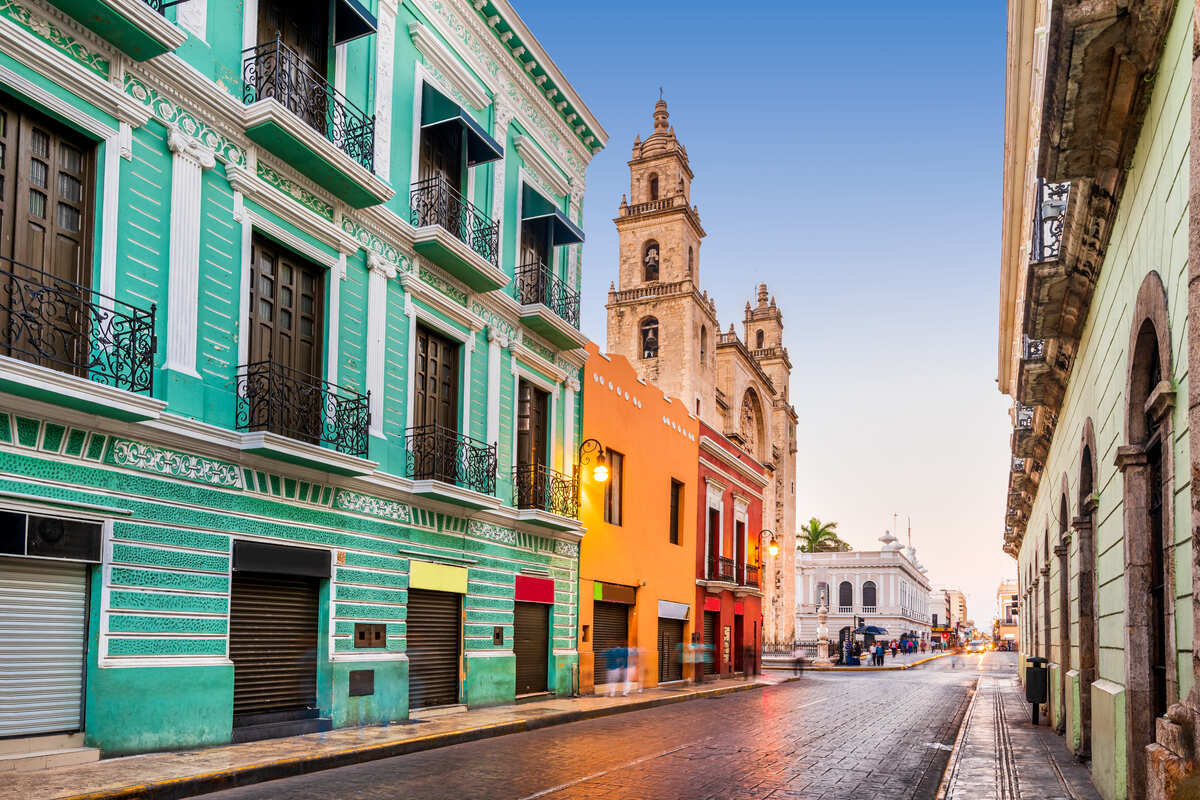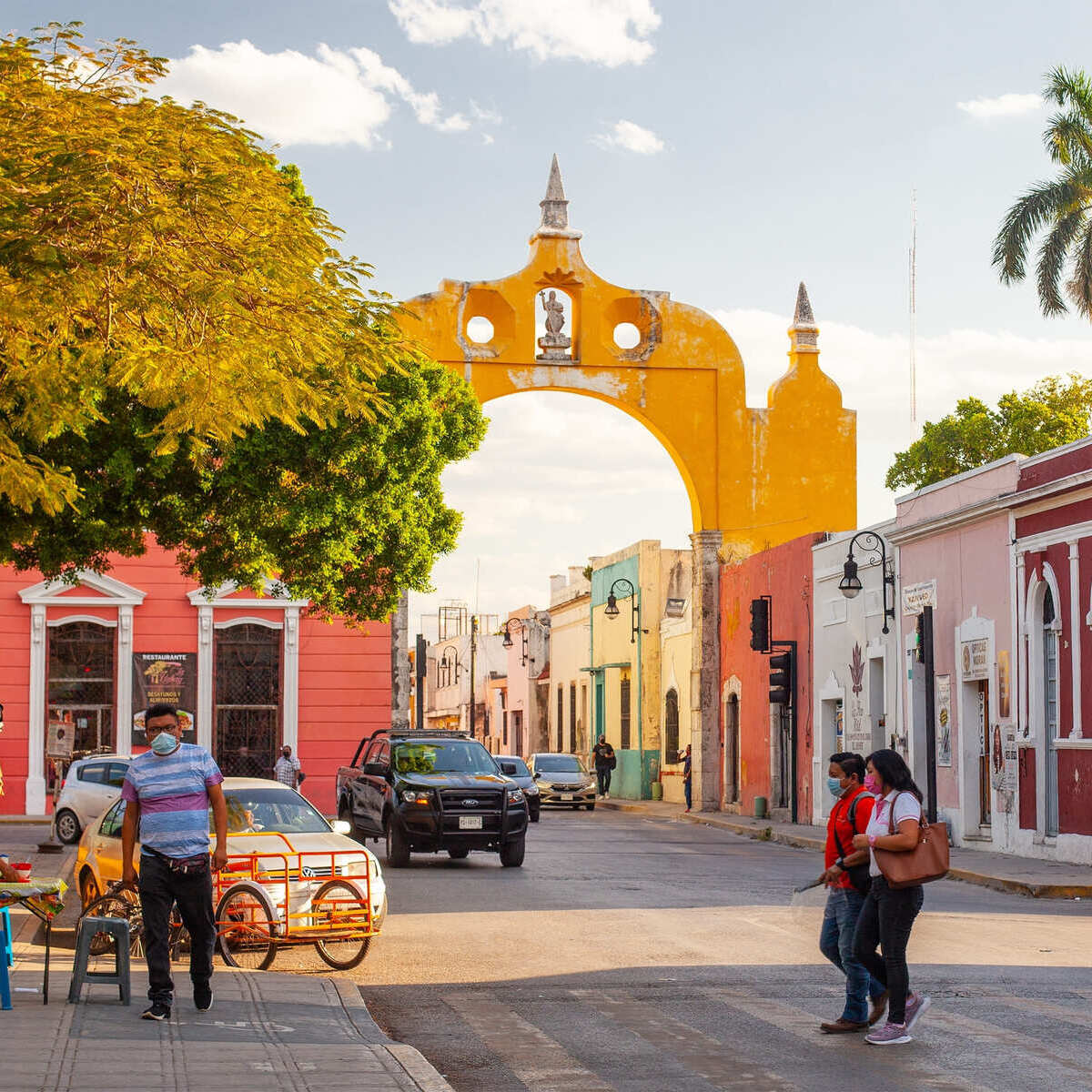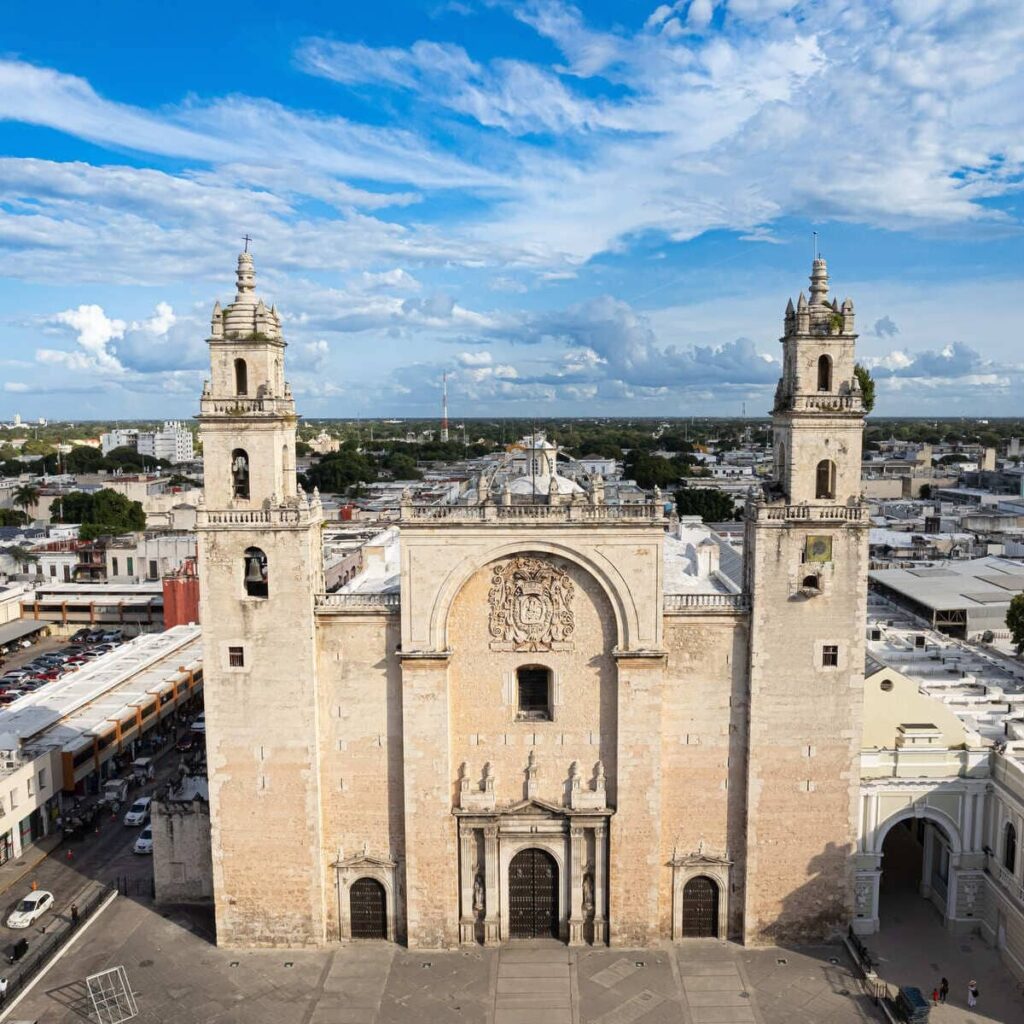Whenever you hear someone discuss their latest Mexico trip, chances are they’re probably bang on about places like Cancun, Los Cabos, or, if they’re into the whole hustle and bustle of a big city, perhaps Mexico City… but only seldom will they bring up Mérida.
Located on the other side of the Yucatán Peninsula, away from the Riviera Maya resorts, it is a city that has historically drawn the attention of a very niche group of travelers, particularly those who are keen on cultural expeditions, as opposed to all-inclusive vacations.
In recent months, however, Mérida has seen a significant uptick in international arrivals, leading us to wonder whether it’s finally getting the recognition it deserves outside certain traveling circles:
1.2 Million Tourists Landed In Mérida So Far This Year

According to La Jornada Maya, a Spanish-language news website based in Mexico, Mérida’s International Airport (MID), alternatively known as Manuel Crescencio Rejón, has seen a 3.7 percent increase in arrivals in the first quarter compared to 2024.
In numbers, that’s exactly 1,239,442 travelers recorded from January to April 2024, already the highest start-of-the-year figures Mérida has seen since tracking began.
Currently, the airport has connections with as many as 12 other cities across Mexico, most notably Mexico City, Guadalajara, and Monterrey, as well as four U.S. hubs: Miami, Orlando, Houston, and Dallas.
The convenience of direct flights might explain the popularity uptick, especially given how a growing number of Americans are now feeling the ‘Cancun fatigue’, and seeking alternatives to the all-inclusive model, but there’s more:
One Of Mexico’s Oldest Colonial Capitals Is Right Here

For starters, Mérida is one of the most historically significant cities in Mexico.
Having been founded early on in the Spanish colonization of the territory, right in the heart of sacred Mayan land, it boasts the kind of material heritage and cultural allure that modern places like Cancun simply do not have.
Its sprawling Historic Center, among the largest in the country, is a UNESCO World Heritage Site comprising picture-perfect streets: dating back to the Spanish era, they are lined with elegant colonial-style townhouses, often painted in vibrant colors, and distinguished for their wrought-iron balconies.
If you’re not easily impressed by glitzy hotel condos and leisure strips, try walking down through History at Paseo de Montejo, a beautiful boulevard flanked by 19th-century French-inspired mansions, or check out the majestic Catedral de San Ildefonso.
How Gorgeous Is This Cathedral?

The city might have been established by European settlers in the 16th century, and that is also when the cathedral’s cornerstone was laid, making it one of the oldest in the American continent, but the lesser-known fact that will blow your mind is that the building itself has native origins:
Though it is undisputably Iberian in character, with its soaring towers and Mudejar-Baroque front portal, the stones used to raise it were in fact stolen from much-older Mayan structures in the vicinity, and this explains the distinct beige hue of the ensemble.
Before the Europeans came, these were Mayan grounds, remember? More specifically, Mérida was the site of the ancient Mayan city of T’ho, largely lying in ruins beneath the Europeanized downtown.
Colonial Wonders Galore

The cathedral is one of several colonial landmarks scattered around the Historic Center, so it’s no wonder a growing number of foreigners are flocking here to soak up the Old World charm.
Palacio de Gobierno, or Governor’s Palace, has been the seat of the Yucatanese administration since the 19th century, and it has a striking green facade facing the main square.
If you’re visiting the museum, don’t forget to pass by the stunning Fernando Castro Pacheco murals, known for depicting the region’s complex history, from Mayan to Spanish to Mexican.
Elsewhere, on Casa de Montejo, you’ll find a rare example of a perfectly preserved Spanish colonial mansion, built all the way back in 1549 by the Montejo family (one of the earliest settlers). Other than the architectural value, it now houses a free museum with art exhibits.
Still can’t get enough of historic buildings? The City Hall (or Palacio Municipal) is certainly not to be missed, with its distinct pink-washed exterior and arched corridors, and don’t forget the richly-decorated Church of the Third Order, or as the locals call it, Iglesia de Jesús.
It may have a modest facade, but inside you’ll find mesmerizing wooden altars, neatly carved, and fascinating religious art.
Incredible Food Everywhere

In any Mexican city, you can usually find the average American tourist wherever the best food is, and in the Yucatanese capital, it’s no exception.
There are a number of public markets around Mérida, peppered with traditional food stalls, serving all your favorite takeout snacks, from cochinita pibil tacos and chicken-filled tortas, to local delicacies like panuchos.
Tourists seem to have a preference for Mercado Lucas de Gálvez, as it is quite central, only a few steps away from the cathedral, or Mercado Santa Ana, just off Paseo de Montejo, but if you want to follow the local crowds, head to Mercado Santiago instead.
Tucked away in the authentic Santiago neighborhood, it’s the top spot in Mérida for a casual lunch that won’t break the bank: we’re talking sandwiches for around $3.50, and freshly-squeezed juice for only a few cents of dollar.
Mérida Is More Affordable Than The Usual Mexico Resort Getaway

In general, Mérida is considerably more affordable than the Riviera Maya and other overtouristed Mexican destinations.
Food in local markets will almost always cost $5 tops, and if you’re sitting down for a meal in a local-frequented cantina, not the ones in the vicinity of the main square that will charge you above-average prices, you’ll get set back roughly $12–$18 each time.
Some of the more upscale restaurants can charge upwards of $30 or even $50 for an elaborate meal, including an entrée and a drink, but then again, it will usually be in a fancy dining setting that justifies the higher-end prices.
In other words, you’ll rarely feel like you’re being ripped off for no reason.
Additionally, accommodation can be just as inexpensive: nothing’s exactly ultra-cheap in Mexico these days, but you can still come across 3 or 4-star hotels in downtown Mérida from $57–$94 per night, like Hotel Mody.
They even have a pool!
Mérida Is Hugely Affordable

Last but certainly not least, Mérida’s rising popularity can be attributed in part to its status as one of Mexico’s safest cities.
Alongside San Francisco de Campeche, it is one of only 2 state capitals to feature at Level 1 on the U.S. State Department’s Travel Advisory.
In non-technical terms, it is as safe as can be, with other traditionally low-risk destinations south of the border like Cancun and Cabo all featuring at Level 2 (one degree higher in unsafety).
Violent crime is way less common in Mérida than in other parts of Mexico, and even petty crime isn’t as widespread compared to Cancun and much of the Mexican Caribbean.
Every Mexican city has its own safety level assigned, so it can be quite confusing to navigate as a non-frequent traveler. But hey, there’s an easy, and straightforward way of double-checking safety advice at your Mexico destination, in only a few seconds!
Try out our new Top U.S. Travel Advisory Checker, which works for different Mexican destinations individually. Awesome, right?
Oh, and if you’re heading to Mexico in the near future, you might want to go ahead and use our Entry Requirement Checker as well. It’s a crazy world, after all, and you just never know when visa rules might change.
The Travel Off Path Advantage: Your Travel Toolkit
Subscribe To Our Latest Posts
Enter your email address to subscribe to Travel Off Path’s latest breaking travel news, straight to your inbox.

